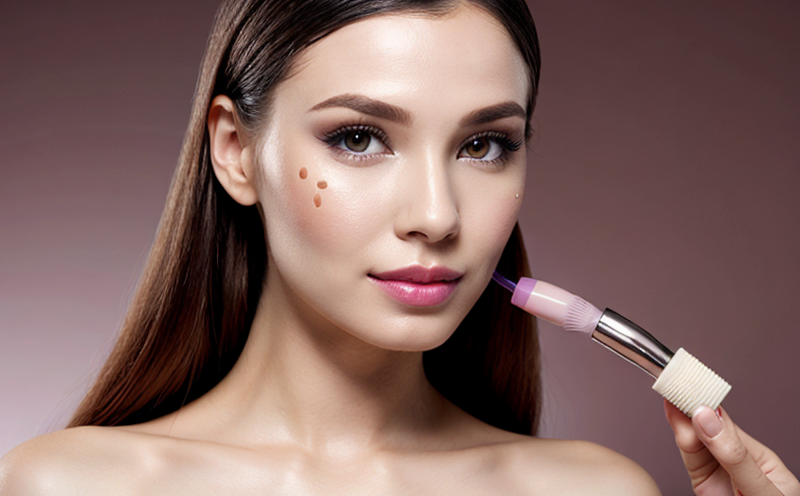In Vitro Safety Testing of Cosmetic Colorants
The in vitro safety testing of cosmetic colorants is a critical aspect of ensuring product safety and compliance with regulatory requirements. This method offers a more humane alternative to traditional animal testing by using cell-based or tissue-engineered models to assess the potential toxicity of colorants. The approach aligns well with current international standards such as ISO, ASTM, EN, and IEC guidelines, which emphasize the transition towards more ethical and efficient testing methods.
The primary focus is on identifying adverse effects that could arise from skin contact or ingestion, ensuring that cosmetic products are safe for consumer use. This service provides a detailed analysis of colorants, including their potential to cause irritation, sensitization, mutagenicity, and other harmful effects. The process involves the following key steps:
- Selection of appropriate cell lines based on the intended use of the product.
- Preparation of the test samples by dissolving or dispersing the colorants in a suitable vehicle.
- Exposure of the cells to varying concentrations of the colorant for defined periods.
- Monitoring and analysis of cellular responses, including changes in viability, gene expression, and metabolic activity.
The use of in vitro methods is not only more ethical but also offers significant advantages over traditional animal testing. These include reduced cost, faster turnaround times, and the ability to test a larger number of samples simultaneously. Additionally, the data generated from these tests can be used to inform product development and improve formulation strategies.
| Test Parameters | Acceptance Criteria | Methodology |
|---|---|---|
| Patch Testing | No visible irritation or sensitization after 48 hours. | Application of colorant to the skin followed by observation for adverse reactions. |
| In Vitro Cytotoxicity Assay | Cell viability above 70%. | Use of MTT or AlamarBlue assays to measure mitochondrial activity. |
| Skin Irritation Testing (Reconstructed Human Skin) | No more than a 2-grade increase in irritation score. | Application of colorant to reconstructed skin and observation for inflammatory responses. |
The results from these tests are comprehensive and provide valuable insights into the safety profile of cosmetic colorants. They help manufacturers make informed decisions about product formulation, ensuring that only safe ingredients reach the market. This service is particularly beneficial for companies committed to regulatory compliance, sustainability, and consumer health.
Eurolab Advantages
At Eurolab, we pride ourselves on offering exceptional service in the field of cosmetic safety testing. Our team of experts is dedicated to providing accurate and reliable results that meet the highest industry standards. With years of experience and cutting-edge technology, we ensure that every test we perform contributes to the development of safe and effective products.
Our clients benefit from our comprehensive approach, which includes not only the execution of tests but also the provision of expert advice on formulation strategies and regulatory compliance. We work closely with our customers to understand their unique needs and develop tailored solutions that meet their goals. Our commitment to excellence is reflected in the quality of our services and the satisfaction of our clients.
Quality and Reliability Assurance
At Eurolab, we are committed to maintaining the highest standards of quality and reliability in all aspects of our operations. Our laboratories are equipped with the latest technology and staffed by experienced professionals who adhere strictly to international standards such as ISO, ASTM, EN, and IEC.
We have implemented rigorous quality control measures to ensure that every test we perform meets the strictest requirements. This includes regular calibration of equipment, validation of methods, and continuous training of our staff to stay abreast of the latest developments in the field. Our commitment to excellence is reflected not only in the accuracy of our results but also in the trust and confidence that our clients place in us.
Use Cases and Application Examples
- Patch Testing: Evaluating colorants for potential skin irritation or sensitization.
- In Vitro Cytotoxicity Assay: Assessing the impact of colorants on cell viability and metabolic activity.
- Skin Irritation Testing (Reconstructed Human Skin): Observing inflammatory responses to colorants in a model of human skin.
- Mutagenicity Test: Determining whether colorants can cause genetic mutations that could lead to cancer.
- Toxicity Testing: Assessing the overall toxicity profile of colorants, including systemic and local effects.
These tests are essential for ensuring that cosmetic products meet safety standards and are suitable for consumer use. They provide valuable insights into the potential risks associated with specific ingredients and help guide product development decisions.





